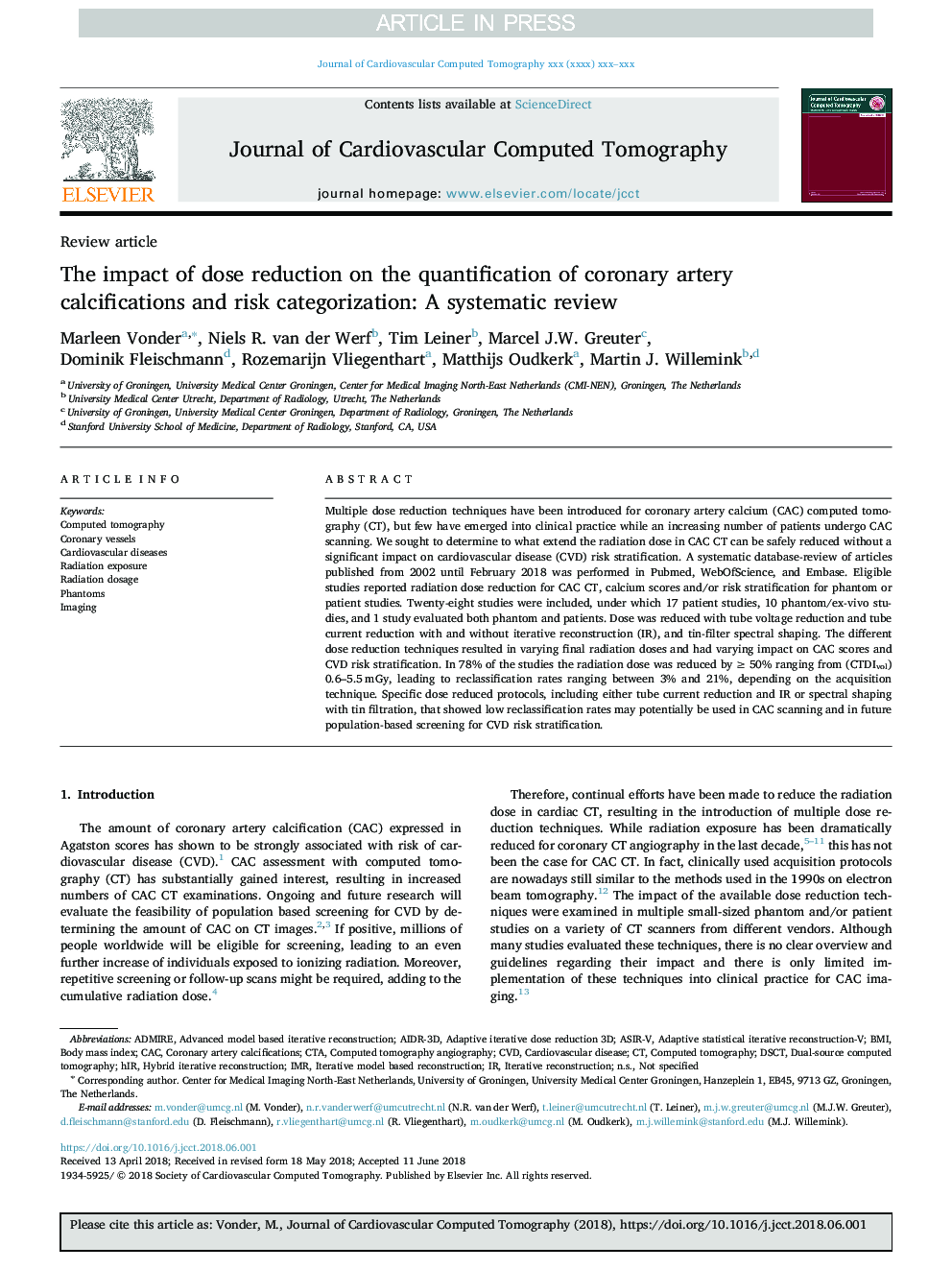| Article ID | Journal | Published Year | Pages | File Type |
|---|---|---|---|---|
| 11010360 | Journal of Cardiovascular Computed Tomography | 2018 | 12 Pages |
Abstract
Multiple dose reduction techniques have been introduced for coronary artery calcium (CAC) computed tomography (CT), but few have emerged into clinical practice while an increasing number of patients undergo CAC scanning. We sought to determine to what extend the radiation dose in CAC CT can be safely reduced without a significant impact on cardiovascular disease (CVD) risk stratification. A systematic database-review of articles published from 2002 until February 2018 was performed in Pubmed, WebOfScience, and Embase. Eligible studies reported radiation dose reduction for CAC CT, calcium scores and/or risk stratification for phantom or patient studies. Twenty-eight studies were included, under which 17 patient studies, 10 phantom/ex-vivo studies, and 1 study evaluated both phantom and patients. Dose was reduced with tube voltage reduction and tube current reduction with and without iterative reconstruction (IR), and tin-filter spectral shaping. The different dose reduction techniques resulted in varying final radiation doses and had varying impact on CAC scores and CVD risk stratification. In 78% of the studies the radiation dose was reduced byâ¯â¥â¯50% ranging from (CTDIvol) 0.6-5.5â¯mGy, leading to reclassification rates ranging between 3% and 21%, depending on the acquisition technique. Specific dose reduced protocols, including either tube current reduction and IR or spectral shaping with tin filtration, that showed low reclassification rates may potentially be used in CAC scanning and in future population-based screening for CVD risk stratification.
Keywords
adaptive iterative dose reduction 3Dhybrid iterative reconstructionCTACACHIRDSCTIMRn.s.Computed tomography angiographyIterative reconstructioncardiovascular diseaseCardiovascular diseasesADMIREImagingdual-source computed tomographycomputed tomographyRadiation dosageCVDbody mass indexBMICoronary vesselsPhantomsRadiation exposurenot specifiedCoronary artery calcifications
Related Topics
Health Sciences
Medicine and Dentistry
Cardiology and Cardiovascular Medicine
Authors
Marleen Vonder, Niels R. van der Werf, Tim Leiner, Marcel J.W. Greuter, Dominik Fleischmann, Rozemarijn Vliegenthart, Matthijs Oudkerk, Martin J. Willemink,
